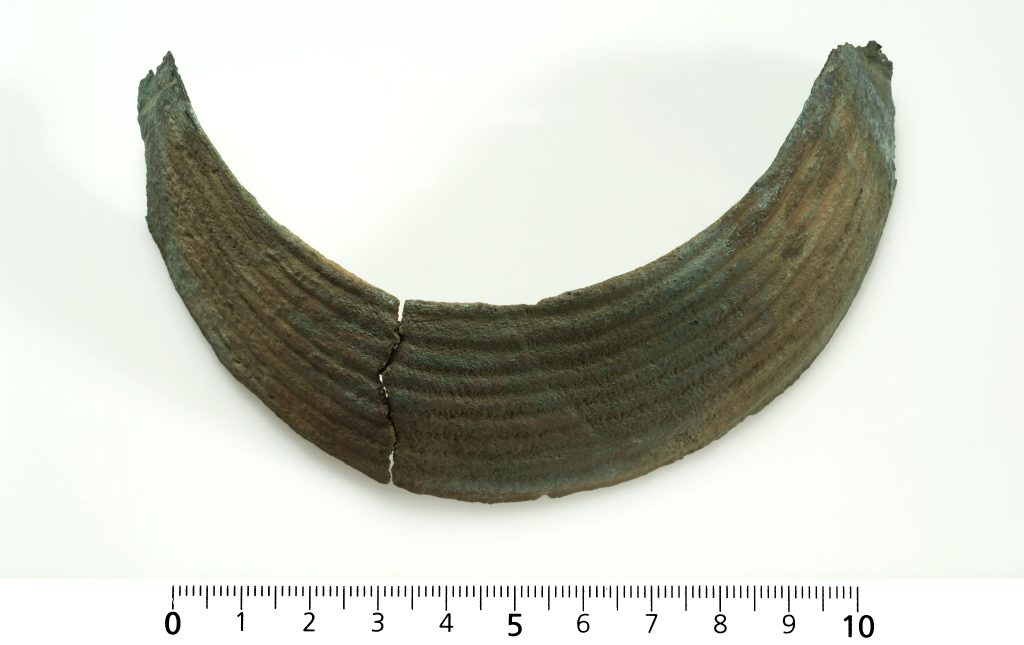
Two fragments of twisted ring of Wendel type, with sharp ribs. Some of the ribs are broken. One end is missing, otherwise the ring is complete. The ring was broken before deposition, and repaired by drilling holes on both sides of the break and threading a leather thong through them. When the ring was found and handed in to the museum, the strap was still attached to the ring, but has now been removed. There is a small piece of bronze near the break, which appears to be a later addition or possible repair, as there is a small crack in the ribs here. Dark green patina, corroded in places. Width: 17.5 cm. B7000/a.
Four fragments of twisted ring of Wendel type, with sharp ribs, similar to B7000/a. The fragments may be from one or possibly two rings, although the shape and patina indicate that the fragments are from one ring. Dark green patina, the fragments are corroded. Some ribs are damaged. The fragments measure approx. 17 cm, 9.5 cm, 6 cm and 6.2 cm. Width: c. 18 cm. B7000/b.
Two fragments of twisted ring of Wendel type, with sharp ribs. The fragments are thinner than B7000/a-b. Green patina, corroded and possibly burnt. The fragments measure 6 and 6.3 cm. B7000/c.
Arm ring with trumpet-shaped ends. It has a rhombic cross-section. Dark green patina. Similar to Baudou’s type XIX D 1 a. Width: c. 7 cm. B7000/d.
Pin with disc-shaped head. The needle itself is missing and part of the head is damaged. It has a conical point in the middle, surrounded by five concentric rings in relief. Part of the needle, where it is attached to the head, is preserved. Dark green patina. Baudou’s type B 2 c (Härnavi type). Width: c. 7.5 cm. B7000/e.
Fragment of a spectacle-shaped fibula, fragment of an oval disc. It is decorated with kidney-shaped concentric relief bands. The outer edge has a line decoration consisting of oblique lines; and between this border and the first relief band there is a border of small dots. Baudou’s type XXIV E 3a. Like Montelius Minnen fig. 1345. Width: c. 11 cm. B7000/f.
Location: Skjerdalen (no. 35/1), Gloppen, Sogn & Fjordane
Context: Found near a large rock, approx. 30 cm deep, on a rocky slope approx. 200-300 m.a.s.l. The area has high mountains and steep mountain sides. There was a circular area of dark blue or black soil where the objects were found, and this may have been urns or possibly the remains of a container, e.g. wood or leather.
Dating: The collection is dated to the Younger Bronze Age period 6. The needle and fibula are dated to period 5-6, the bracelet probably period 6, and the Wendel rings are period 6.
























